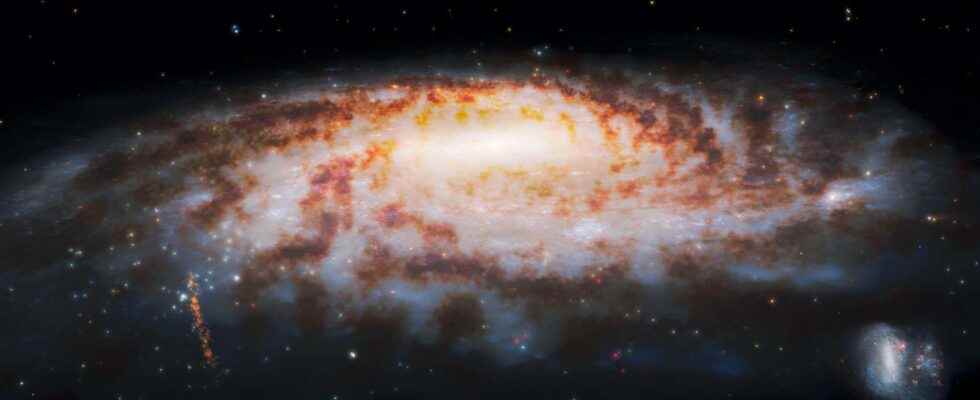The newly launched James-Webb Space Telescope is expected to allow astronomers to probe the far reaches of the Universe in search of its oldest stars. But the discovery made by an international team could save them from having to look so far. The researchers have just got their hands on stars of very low metallicity – and therefore very old – right there, on the outskirts of the Milky Way.
Our Sun is certainly composed of more than 98% ofhydrogen and D’helium. The lightest chemical elements of the’Universe. But it also contains some heavier elements. These heavy elements – like the carbon, L’oxygen where the iron, generically referred to as metals -, the Sun takes them from gas from which it condensed. Heavy elements scattered there by stars massive at the end of their life. Generations of stars which preceded that of our Sun. Thus measure that which the astronomers call her metallicity of a star gives an idea of its age. The higher the metallicity, the younger the star.
However, an international team led by a researcher at the Strasbourg Astronomical Observatory (CNRS) has just updated, at the heart of the Milky Way, a group of stars whose metallicity appears extremely low. About 2,500 times weaker than that of our Sun. And much lower than those measured in other structures elsewhere in the Universe.
In reality, this group of stars is not quite at the heart of our Galaxy. Rather even on the side of its periphery. On the south side. And these stars travel on a orbit which ranges from 20,000 to 90,000 light years from the center of the Milky Way. Even though this stellar flux that the researchers dubbed C-19 is about 30 times the width of the full moon, it is not visible in our sky at theeye naked.
Rewrite the history of the formation of stars and galaxies?
His discovery shakes up current models of star formation, ofclusters and galaxies. Because until then, astronomers did not even consider that such structures, composed only of stars with low metallicity, could exist. At best, they imagined that they would all be long gone from our Universe. C – 19, and its stars with a metallicity lower than 0.05% that of the Sun, proves on the contrary that the first constituent elements of the Milky Way were formed in environments poor in metals.
It is thanks to the data of the mission Gaia that astronomers got their hands on C-19. By applying an algorithm to them to detect star flux. The Pristine program, aimed at flushing out stars of lower metallicity in and around the Milky Way, has revealed their astonishing characteristics. And other observations, among which high spectra resolution, confirmed that C-19 was the remains of a globular cluster – a grouping of several thousand to several million stars formed at the same time and whose metallicity is more generally between 1 and 10% that of our Sun – torn.
While astronomers used to study distant galaxies to approach some ancient stars – because of the time it takes for their light to reach our Earth – they can now consider studying structures as well. old. But much closer to us. A bit as if a new one window had just opened on the first sequences of star formation in our Universe.
Interested in what you just read?
.
fs3
